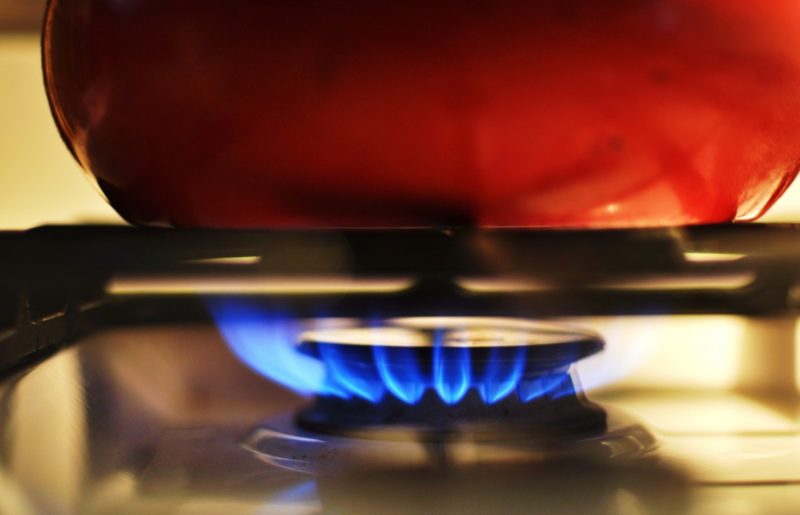Are you wondering: why won’t my gas stove light on? A gas stove comes in useful when you’re pressed for time. Some home cooks prefer using gas burners to electric stoves when cooking.
When the igniter clicks, it’s fun to see the flames crackle and the gas fill the room.
Maintaining the cleanliness and uniformity of your cooktop stove’s heat will enhance your cooking experience. However, turning the knob and not seeing or hearing a flare-up or whoosh might be frustrating. Even worse, if the burner won’t ignite, you won’t be able to cook.
Possible Issues Why Won’t A Gas Stove Light On
Several things can affect how well the stove’s gas burners operate; therefore the solution could be any of them. After working on some gas stoves with this issue, we’ve compiled a detailed list of possible causes and solutions. So, why won’t my gas stove light on?
#1. No electricity
Because there is no electricity, the stove is not operating. Make sure the stove is ready to use by checking to see whether it is already on. Observe the stove for a few moments. Make sure the plug is firmly attached to the wall by looking at it from the back. Check to see that the plug is properly secured in the wall.
#2. Pipeline for natural gas has been switched off
Even if a gas shortage is extremely unlikely, it would have a similar impact on power generation as a price hike on natural gas. You may have accidentally cut your stove’s gas line if that’s the case.
To put it another way, it could have been done by the person who lived in the house before you as a way to get out or as a joke. Consider the possibility that the gas line was accidentally turned off, even if it seems unlikely.
Be confident you have the gas line valve behind the stove fully open. Instead of being parallel to the pipe, the oval or lever-shaped knob should be perpendicular (at a right angle).
#3. Detachable electrodes that need to be replaced
You can also utilize electricity to start a gas burner. When the burner releases gas, an electric spark from a series of electrodes ignites it. Underneath the burner caps, a line of white dots represents the electrodes.
Make sure your electrode line is free of any obstructions by inspecting it thoroughly. It’s important to keep an eye out for any loose electrodes, dangling cables, or electrodes that appear to have shifted. If necessary, arrange everything and retest the burner.
#4. The pilot light goes out
When utilizing a gas burner, there are two ways to ignite the fuel. Vintage and expensive stoves, in particular, may come with an optional pilot light. It is a small flame that is kept alight under the stovetop in the cupboard. To light the gas ring, you’ll need a tiny flame like this.
Just before the gas is about to ignite, the switch connects a wire to the pilot light. If your stove’s pilot light goes out, you’ll be unable to fire your burner. Fortunately, the pilot lights on the majority of stoves are well-protected and hence challenging to put out. To give you a clear perspective, know what to do if your pilot light goes out.
#5. Burner caps or valves are clogged
The problem may be with the gas itself. Grooves in the burner cap allow gas from a gas stove to pass through. On the valve or cap, grease and food residue might build up.
A blockage in either pipe will prevent the gas from flowing. It will be impossible to ignite the ring if gas cannot flow through it. Cleaning the burner cap is an easy and fast solution to this problem.
You can clean the burner cap with warm water, soap, and a soft brush. Use the same technique to clean the stove’s other dirty areas while you’re at it, such as the oven. Then, replace the burner cap and do another test after making sure the valve is clear.
#6. Misaligned burner caps
Burner caps that are out of alignment could also be to blame. The valve and grooves don’t match up on a few stoves because of the replaced burner cap. Thus, your burner’s valve is still effectively closed, preventing any gas from getting in.
Then, if you’re still stumped, make sure you check and rotate the burner covers on each burner properly before doing the test again. The draft allows outside air to travel through the vent into the stove.
There may be cold air trapped in your chimney, making it more difficult to light your stove. Before lighting your fire, use a heat source to warm up the flue and get the air flowing again. Before lighting a fire on our wood stove, we place a lit piece of newspaper under the stove’s flue outlet. If I were you, know how to vent a wood stove without a chimney.
It’s A Wrap!
Even if the gas hasn’t ignited, it could still be running unchecked. That’s both possible and also dangerous which is why you must find an answer to the question as to why won’t my gas stove light on so it will avoid that more prominent issue. For more articles like this, check out how to keep wood stove burning all night. Thanks for stopping by! I genuinely appreciate it.

